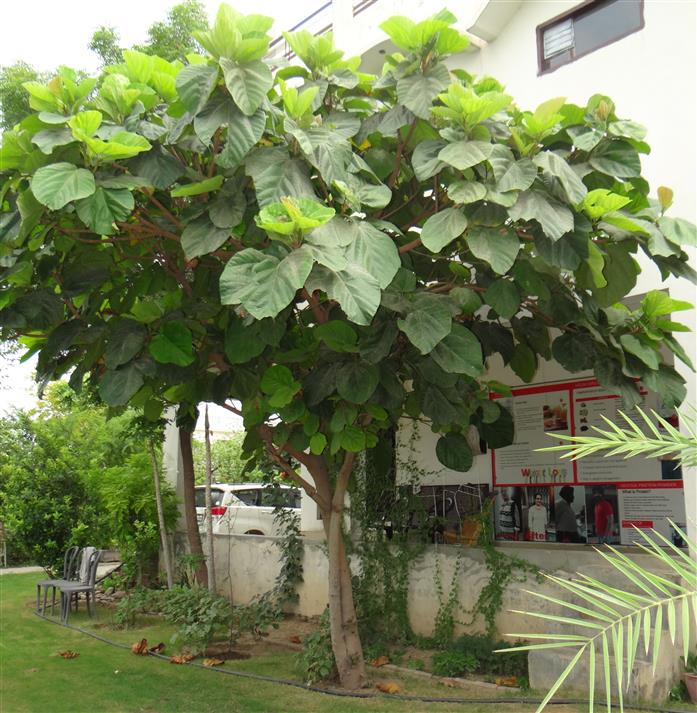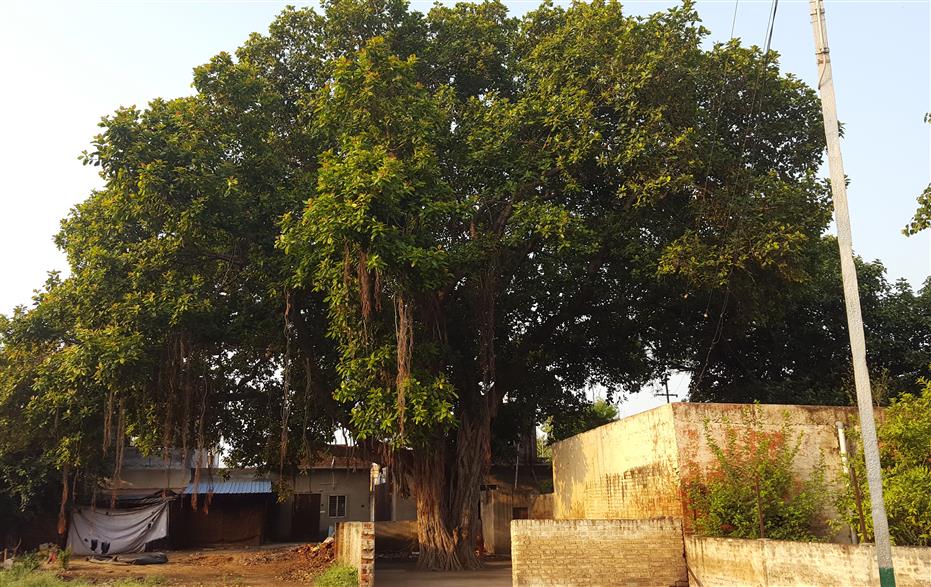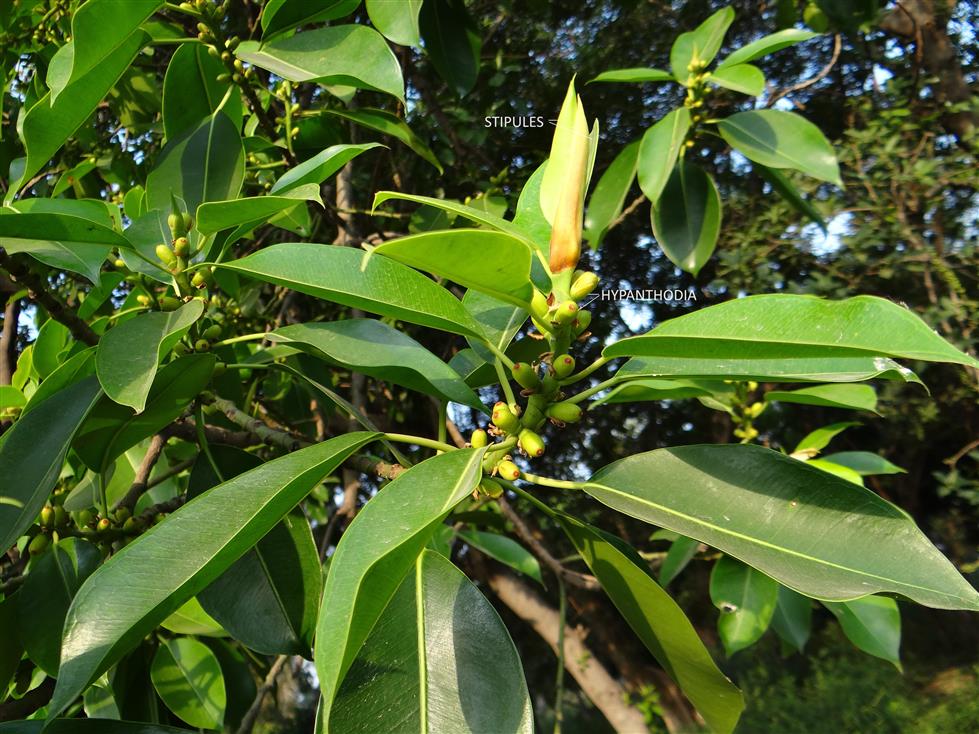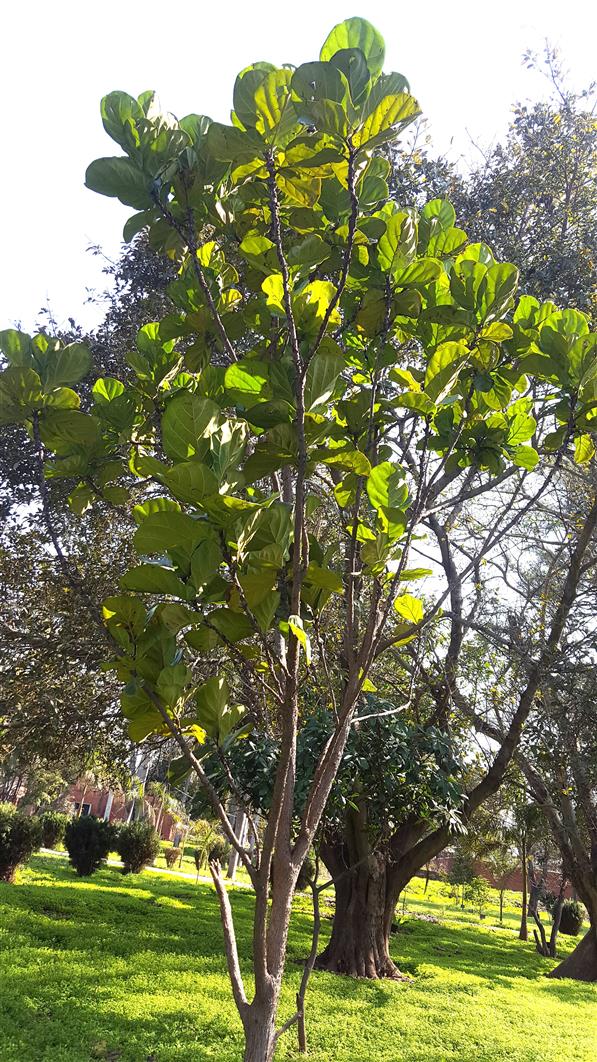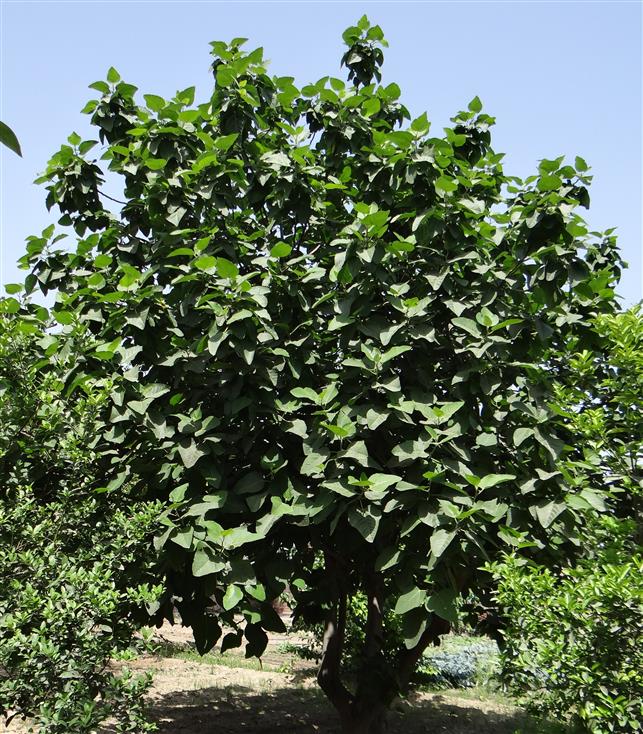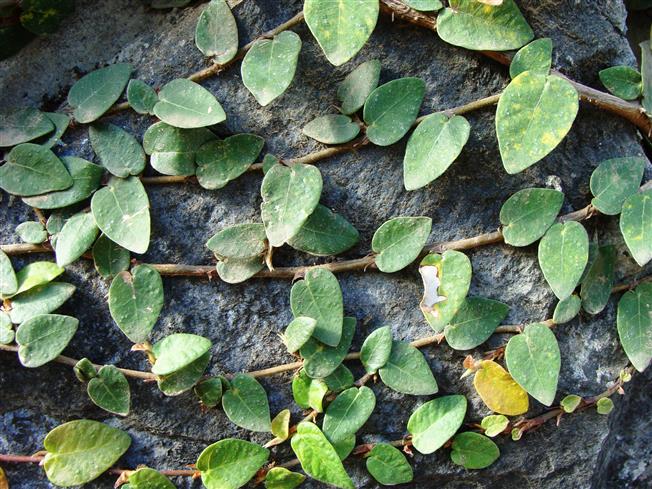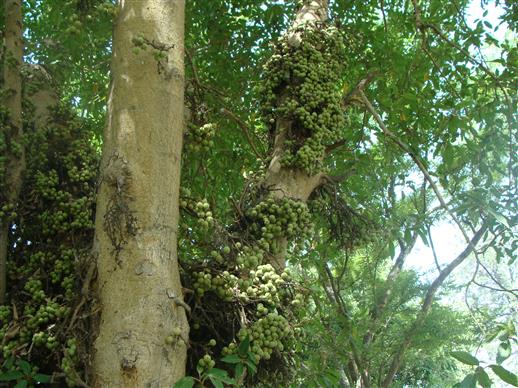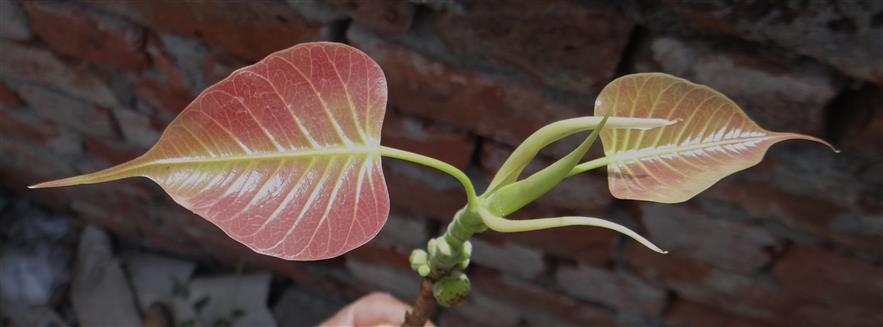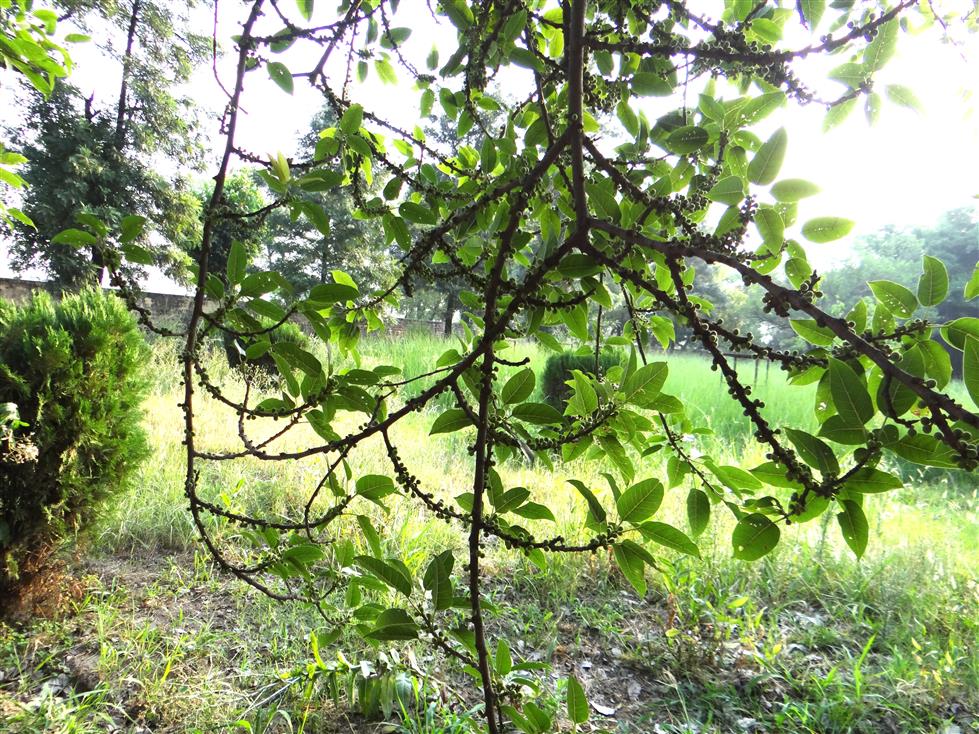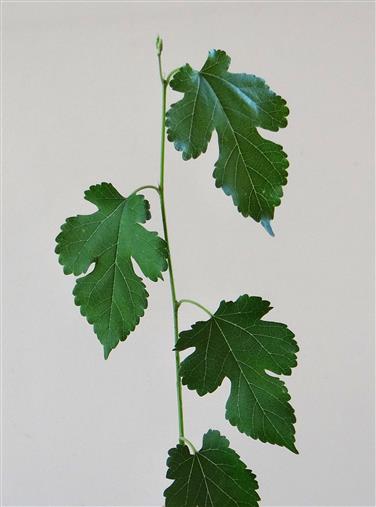MORACEAE
Trees, shrubs, vines, rarely herbs; frequently with milky or watery latex, sometimes spiny. Leaves alternate, rarely opposite, petiolate; leaf blade simple, margin entire, serrate or palmately-lobed, venation pinnate or palmate, 3-5-costate; stipules 2, lateral, fugacious and leaving a distinct annular scar. Inflorescences axillary, frequently paired, racemes, spikes, catkins, globose heads or hypanthodium. Flowers unisexual (plants dioecious or monoecious), actinomorphic, hypogynous to epigynous, monochlamydeous, perianth calycine. Sepals (1 or) 2-4(-8), biseriate, free, imbricate or valvate or +/- connate, enveloping the carpel in female flowers. Petals absent. Male Flowers: Stamens as many as sepals, often less, antisepalous, filaments straight or inflexed in bud, free; anthers bithecous, versatile, longitudinally dehiscent. Pistillode often present. Female Flowers: Calyx lobes usually 4. Carpels 2, syncarpous, 1 carpel frequently abortive, ovary superior, semi-inferior to inferior, usually 1-locular, ovules solitary, anatropous, campylotropous, pendulous from apex, rarely basal and upright; style often eccentric, branches 1 or 2; stigmas usually filiform. Fruit a simple drupe, nut or achene or sometimes sorosis (when inflorescence catkin) or syconus (when inflorescence hypanthodium). Seeds solitary, endosperm present or absent.
48 genera and about 1400 species
